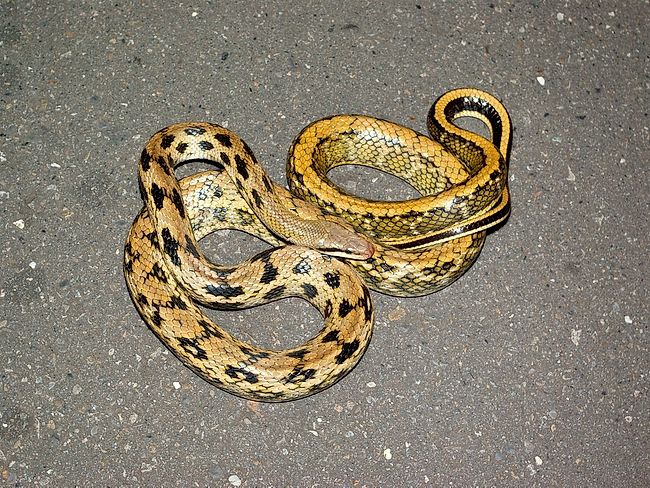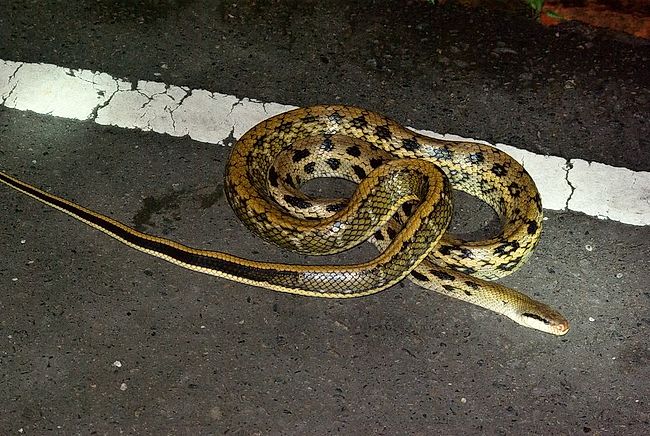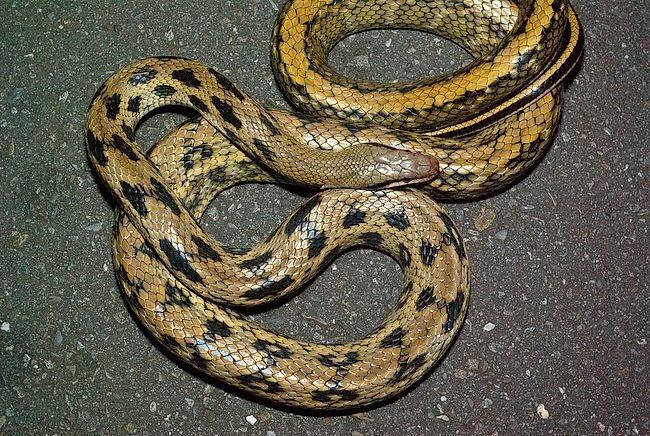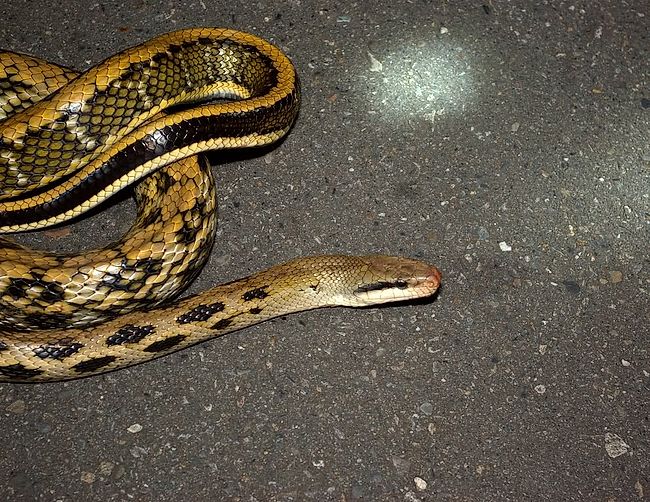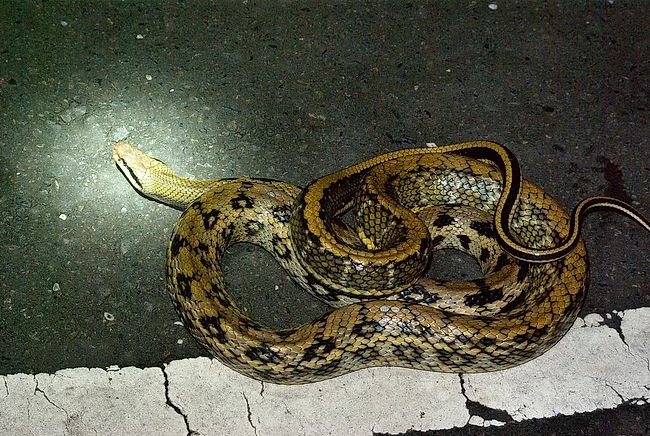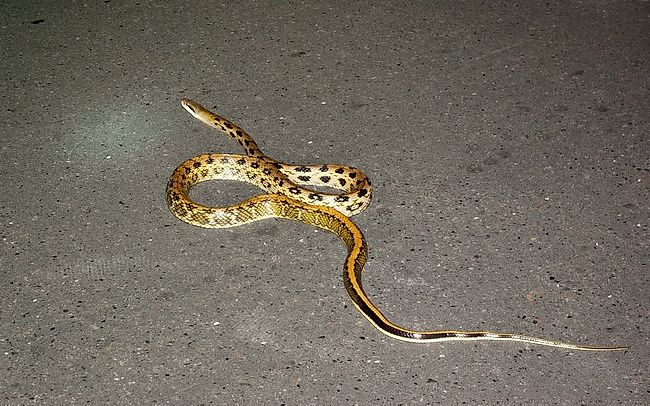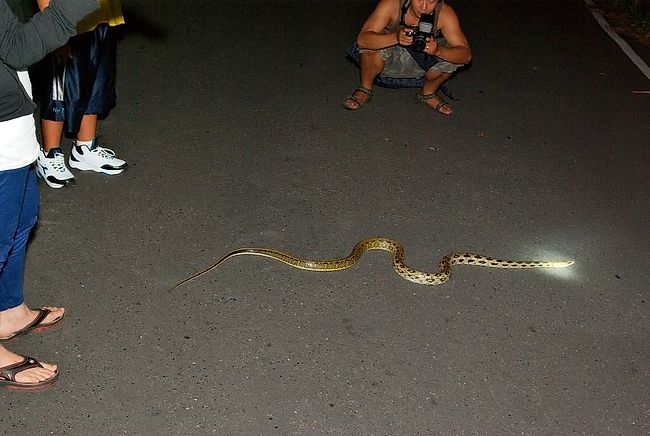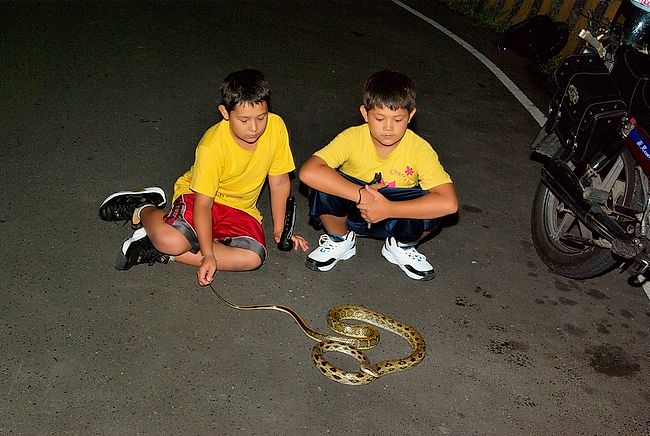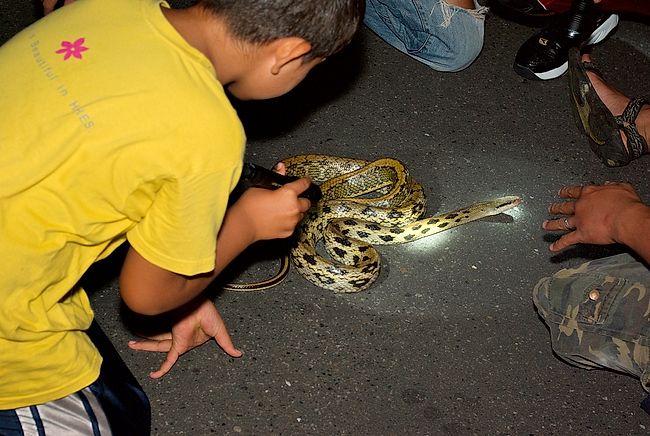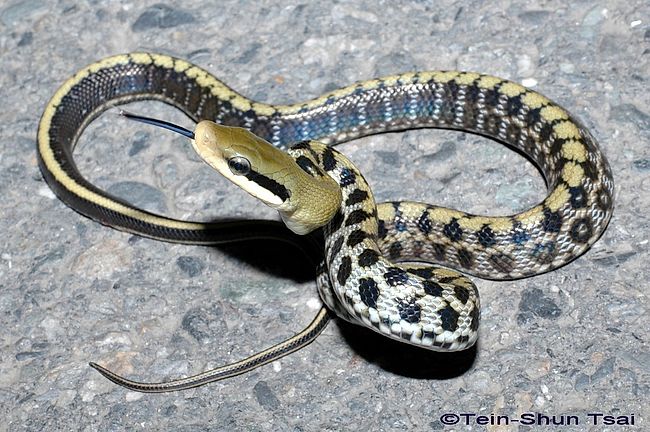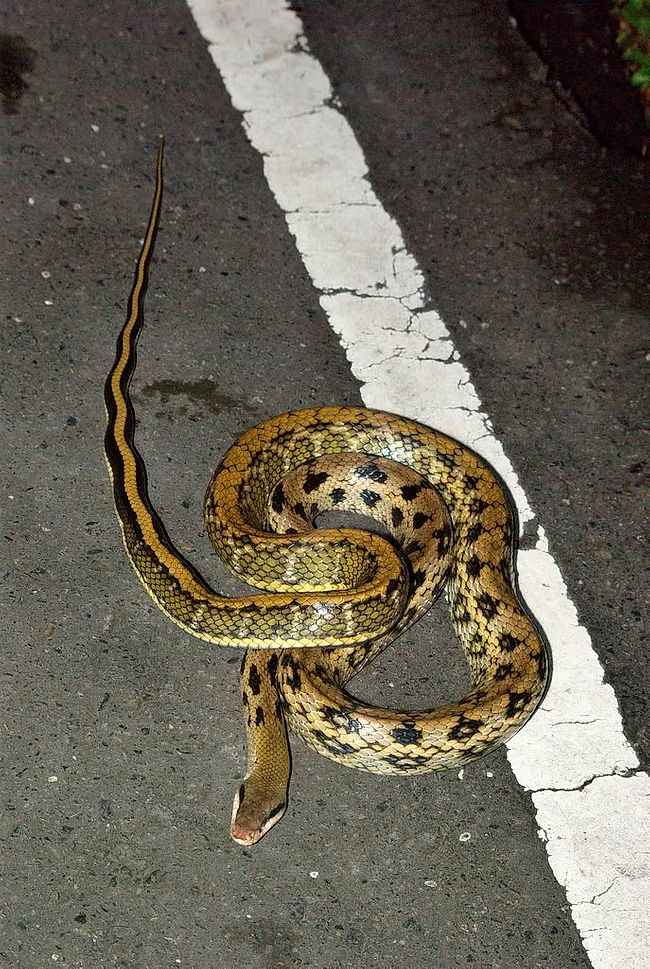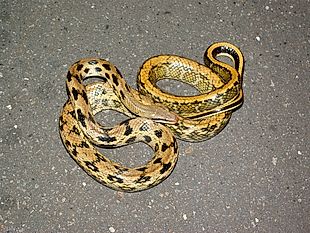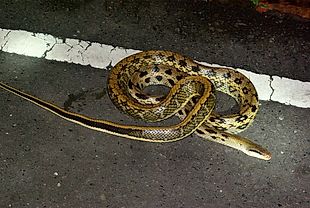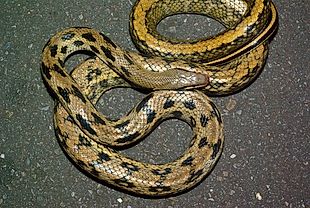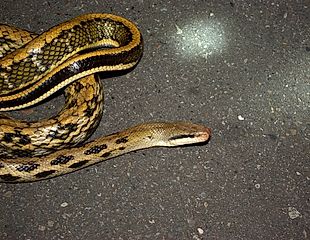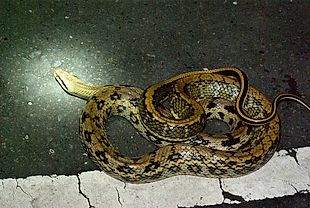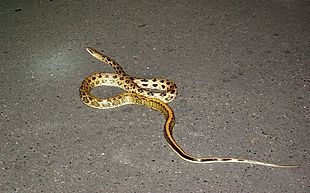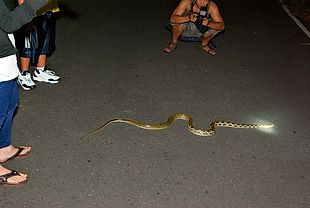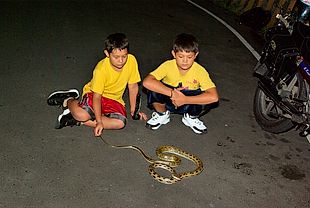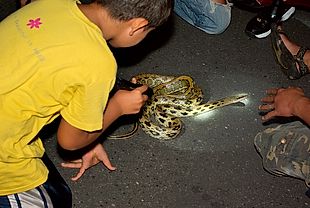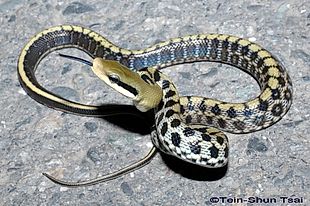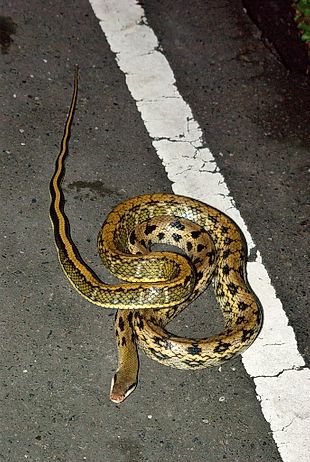Elaphe taeniura friesi
Taiwan Beauty Snake
黑 眉錦蛇 (hei1mei2jin3she2)
Status: Protected (Cat. III)
Non-venomous
Videos
Field Reports
Family
Colubridae, subfamily Colubrinae
Max. length
270 cm
Occurrence in Taiwan
Throughout Taiwan, up to 2000 m altitude. Not common.
Global Distribution
This subspecies is endemic to Taiwan.
Description
Large snake;
total length up to 280 cm. There are 17-25 (25 at mid-body) rows of
scales, which are feebly keeled except those on the flanks. Head is
roughly triangular; body is moderately heavy or robust; tail is long. Eye
is medium to large; iris is olive gray to dirty yellow, darkened by fine
diffuse black pigment, and a broad gray black to black horizontal band
runs across eye and appears as continuation of prominent dark band behind
eye; pupil is round, jet black with ring of dull yellow. Tongue is large,
with black to blue-black stem which is darker than fork tips. Upper head
is olive yellow to dark olive gray and may be tinged with brown; the
labials are lighter. There is a prominent black band extending from eye
near to corner of mouth. The general color of the upper body is olive
yellow to yellow gray tinged with varying shades of green and black. In
the anterior two-thirds of body, there are two dorsal rows of black
blotches and two on the flanks. On the posterior body, the designs turn
into a broad median stripe of olive yellow and two lateral series of broad
dark (which appear as two intact lateral stripes in tail), beneath which
there are two light yellow to yellow stripes. Ventral head and neck are
white to cream. The other areas of the ventral body and tail are yellow,
with few small irregular gray or gray black designs anteriorly followed by
more numerous and progressively darker designs posteriorly. Most designs
occur in outer quarter or third of the ventrals and form a pair of
longitudinal bands in posterior third of body and in tail. Anal scale is
divided and subcaudals are paired.
Biology & Ecology
Elaphe taeniurus friesei is the largest snake in Taiwan. This cathemeral
(diurnal as well as nocturnal) ratsnake is found in grasslands and forests in lowlands
or mountains, as well as around human dwellings. It preys on frogs, birds, bird eggs,
and rodents. It mates in May; females produce 2-13 eggs of approximately 5x3 cm per
clutch in summer. Hatchlings measure about 40 cm in total length. It is quite agile,
moves fairly fast on the ground as well as in shrubs or trees. This snake is docile
and adapts well to captivity. When first confined, it may assume a defensive attitude
and emit low hissing sounds.
Etymology
"The generic name Elaphe is derived from the Greek word elaphos which means "stag".
Unfortunately, Leopold Fitzinger (1833) failed to give a reason why he chose this name.
One could guess that it refers to the antler-like marking on the head of the type species
Elaphe quatuorlineata sauromates, which also occurs in many other species." (Source)
taeniura stems from the Greek taenia = ribbon and oura = tail, referring to the striped tail.
The Chinese name 黑眉錦蛇 (hei1mei2jin3she2) means "Black-browed (黑眉) Beauty Snake (錦蛇)".
Further Info











